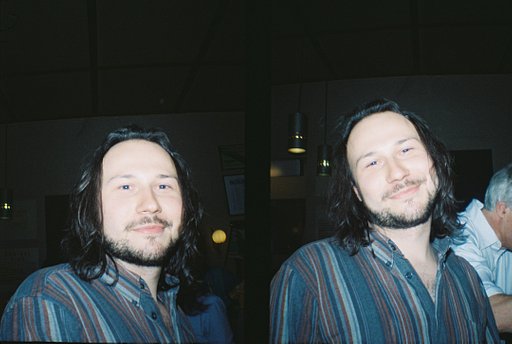What is large format or sheet film?
“Large format” refers to a film type with a frame size of 4×5 inches or larger. The film is produced in individual sheets which are loaded into film holders and so for this reason it is also sometimes referred to as “sheet film.”

The most common sizes of large format film are 4×5, 5×7, 8×10, and 11×14. As the name suggests, large format produces the biggest film negative possible and therefore gives photographers the highest level of detail and clarity possible in the final images.
The trade off for this level of quality tends to be expensive and cumbersome cameras. There are two main types of Large Format cameras: field and studio (or monorail) cameras. Field cameras allow the camera to fold into itself to facilitate ease of storage and transport. Monorail cameras are larger and heavier but they allow for greater versatility in camera movements. They use a single round or square rail as the base of the camera on which the front and rear sections slide back and forth in order to fit lenses of different focal lengths.
Several popular film stocks are available in large format, including Kodak Ektar 100, Kodak Portra 160 and Portra 400 for color photography. For black and white there is Kodak Tri-X 320, Kodak T-Max 100, T-Max 400, Ilford HP5, Ilford FP4 and Ilford Delta 100.
Anything missing?
Can’t find an answer to your question? Or do you have some useful advice to add to one of our courses? We want to build the world’s largest analogue learning space, so please send any further requests or information to school@lomography.com and we’ll take a look!
More Courses
-
What are the different photographic film formats?
The three main types of film format are 35 mm, medium format and large format. More unusual formats also exist such as 110 and 127.
-
What is tungsten film?
Most standard films are daylight-balanced, so they tend to capture the yellow-orange cast from tungsten lights. To address this, tungsten film was created to produce color-correct images taken under artificial lighting.
-
What is 126 film?
126 film was launched by Kodak in 1963 as a way to simplify the process of loading and unloading film into cameras. Its name comes from the negatives’ dimension of 26.5 mm square. Although companies ceased mass production of 126 format around 2007 to 2008, its cartridge is still known and loved today.
-
What is APS film?
Advanced Photo System or APS film was introduced in 1996 as a “high-tech” or modern alternative to the 126 and 110 film formats. It was 24 mm wide and it introduced many innovations, like the ability to choose exposure lengths and print sizes. Production of new APS film was ceased in 2011.
-
What is the difference between panchromatic and orthochromatic film?
Orthochromatic film is made with blue-sensitive silver halide crystals, while panchromatic film adds other chemicals to increase the film’s sensitivity into the green and red parts of the spectrum.
-
What is a half-frame film camera?
Half-frame cameras shoot 18×24 mm photographs on 35 mm film. This means you can take up to 72 images on one single roll and save a lot of film!
-
What are LomoChrome films?
LomoChrome is the name given to Lomography’s experimental film stocks. There are currently four LomoChrome film stocks available: LomoChrome Purple, LomoChrome Turquoise, LomoChrome Metropolis, and LomoChrome Color ‘92.
-
Where to get film developed?
There are a lot of places that can process and develop your 35 mm color negative film such as local drugstores or one-hour photo labs.
-
What is the processing method for Redscale and LomoChrome films?
All Lomography color films are processed using C-41 chemicals. This includes Lomography RedScale XR and our popular range of color-shifting LomoChrome films – LomoChrome Purple, LomoChrome Metropolis and LomoChrome Turquoise





